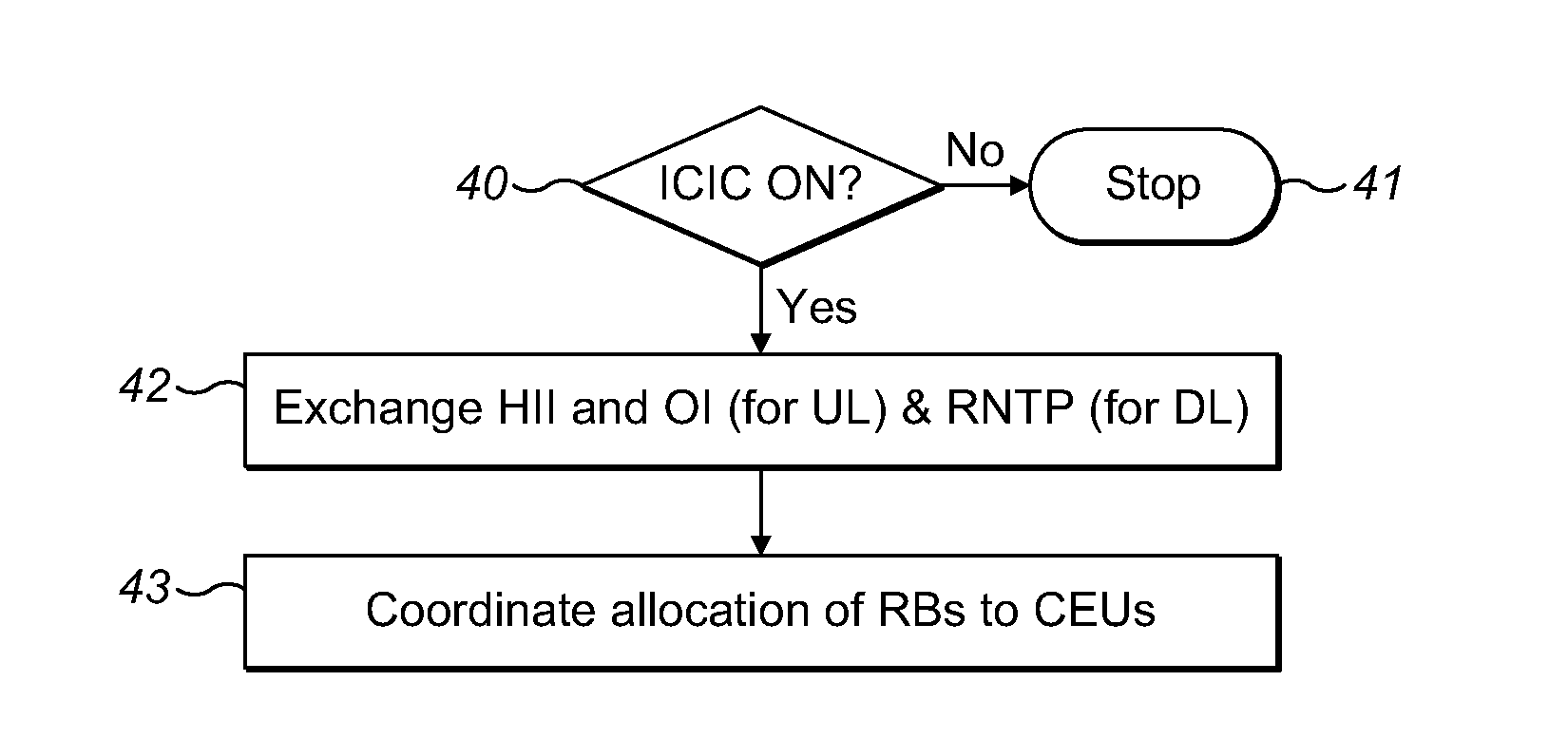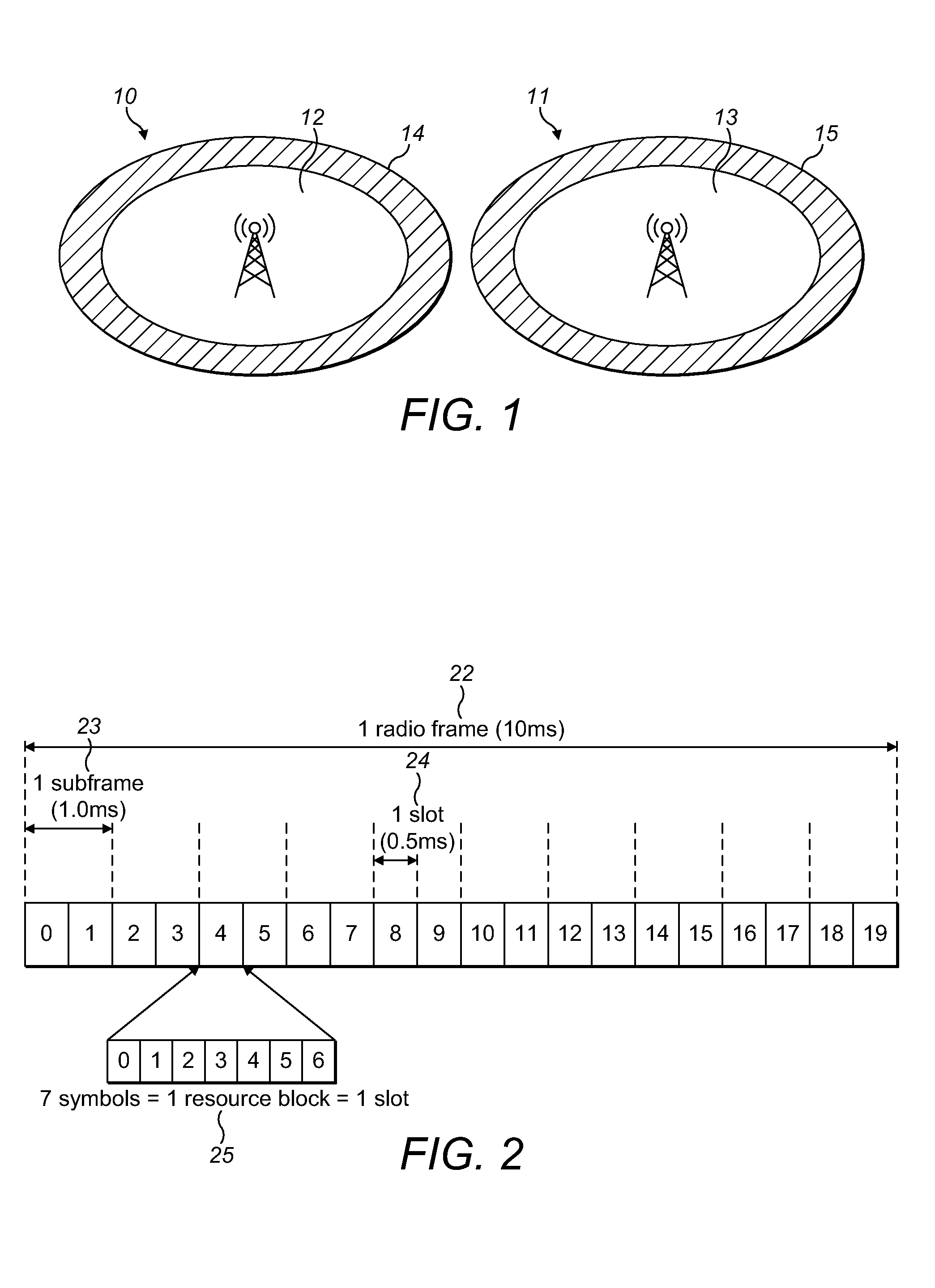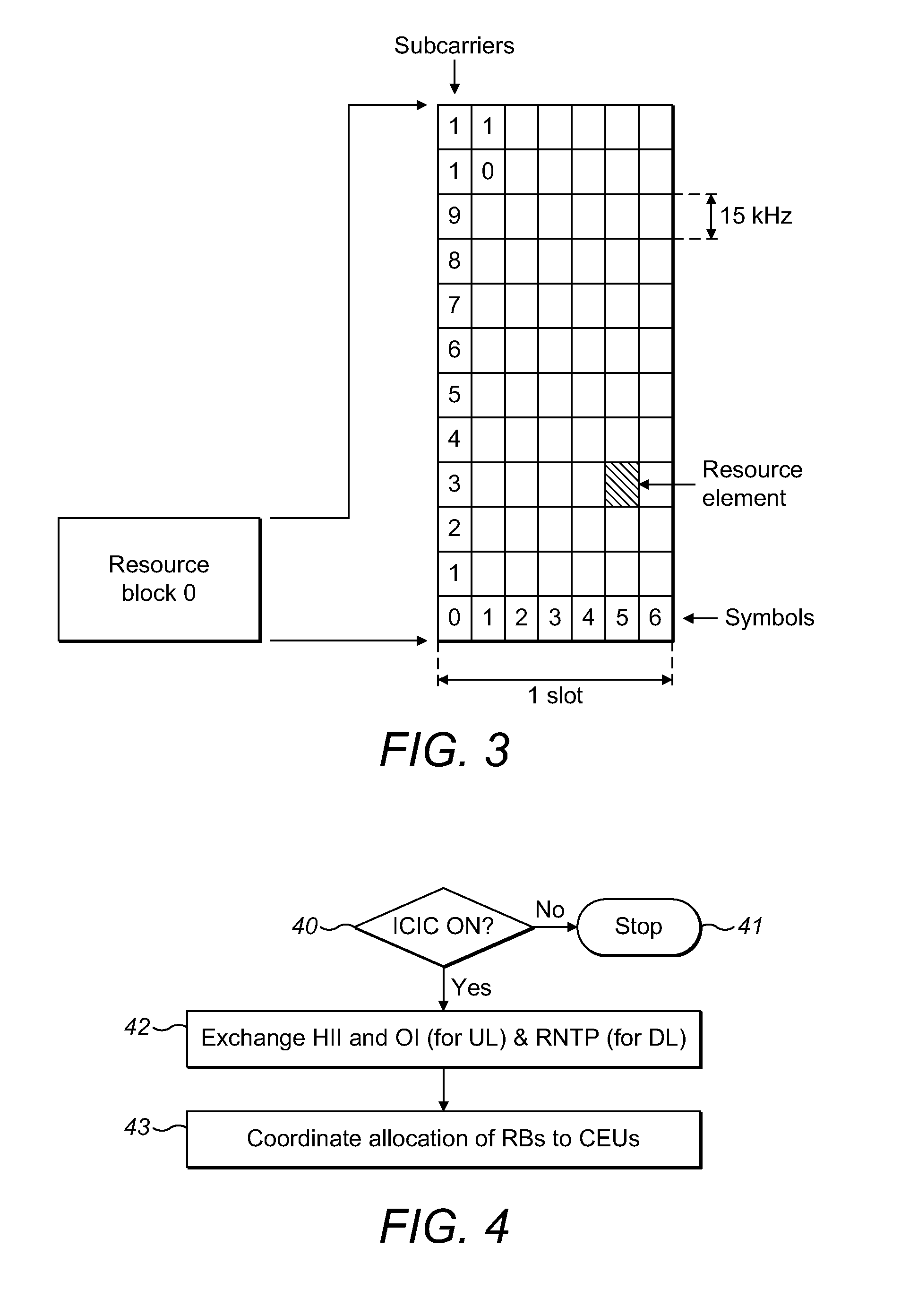COORDINATION AND QoS SCHEDULING
a technology of qos scheduling and coordination, applied in the direction of electrical equipment, wireless communication, etc., can solve the problems of insufficient allocation of resources for ccus which have been assigned a high priority, inability to allocate resources for high priority,
- Summary
- Abstract
- Description
- Claims
- Application Information
AI Technical Summary
Benefits of technology
Problems solved by technology
Method used
Image
Examples
Embodiment Construction
[0048]In the following description, reference will be made to Global System for Mobile Communications (GSM), Universal Mobile Telecommunications System (UMTS), Long Term Evolution (LTE) and to particular standards. However it should be understood that the present disclosure is not intended to be limited to these. The present invention may also be applicable to a number of modes of transmission such as Time Division Duplex (TDD), Frequency Division Duplex (FDD), Time Division-Synchronous Code Division Multiple Access (TD-SCDMA), and High Speed Downlink Packet Access (HSDPA), among others.
[0049]While devices are often referred to as “mobile” in the description herein, the term “mobile” should not be construed to require that a device always be mobile, merely that it has the capability of being in communication with a wireless telecommunications network which allows mobility. For instance, a PC terminal or a machine to machine client that is never moved from a particular geographic loc...
PUM
 Login to View More
Login to View More Abstract
Description
Claims
Application Information
 Login to View More
Login to View More - R&D
- Intellectual Property
- Life Sciences
- Materials
- Tech Scout
- Unparalleled Data Quality
- Higher Quality Content
- 60% Fewer Hallucinations
Browse by: Latest US Patents, China's latest patents, Technical Efficacy Thesaurus, Application Domain, Technology Topic, Popular Technical Reports.
© 2025 PatSnap. All rights reserved.Legal|Privacy policy|Modern Slavery Act Transparency Statement|Sitemap|About US| Contact US: help@patsnap.com



